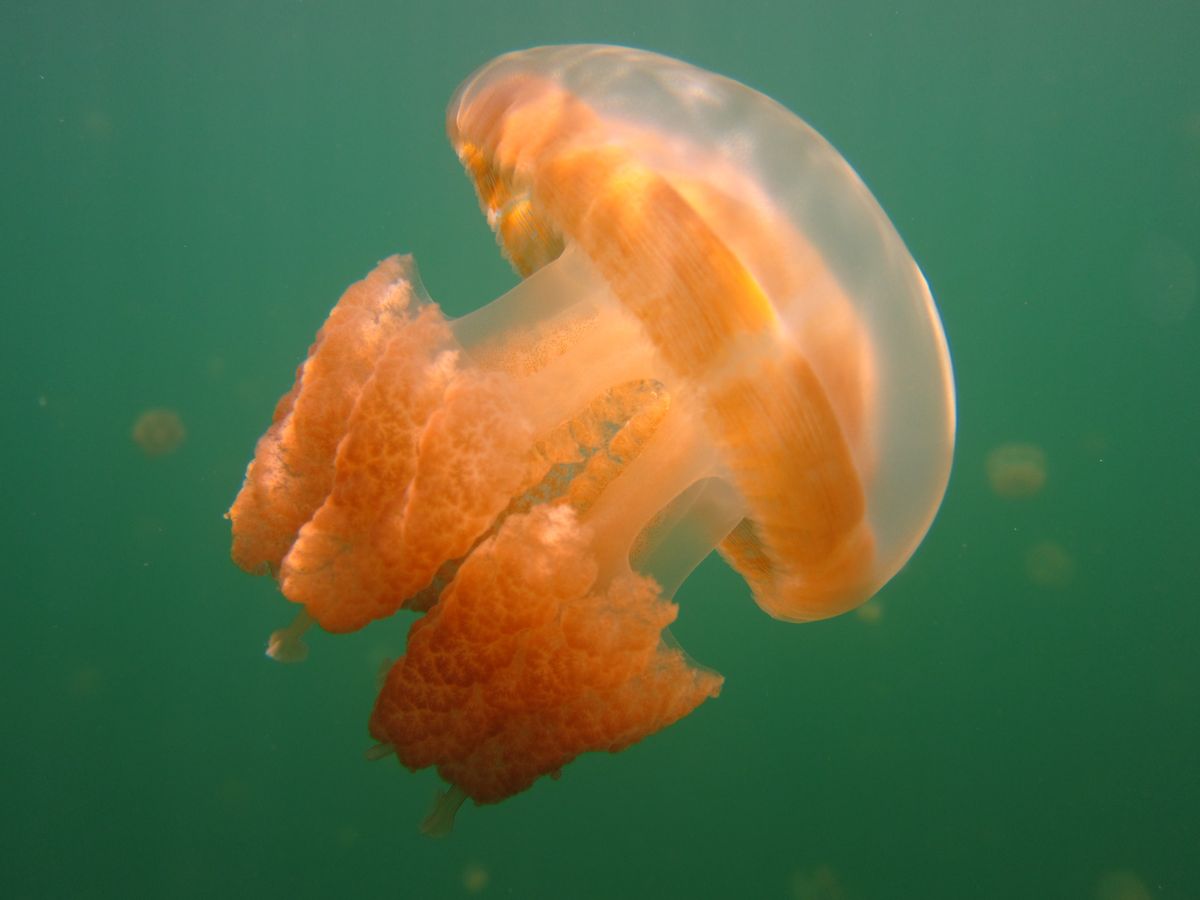About
Located on an uninhabited rock island off the coast of Koror in Palau, Jellyfish Lake is one of 70 saltwater lakes on this South Pacific archipelago that were once connected to the ocean, but are now cut off.
The isolated lakes became the perfect setting for a jellyfish explosion, which some speculate were trapped in the lake 12,000 years ago after a rise in sea levels post-Ice Age. The jellyfish, which munch on algae and have no natural predators present, fill the little lake. Though the jellyfish do have stingers, they are too small to be felt by humans.
You can swim in the lake, but you can't scuba dive, as that may disturb the delicate ecosystem. The lake is stratified into two layers, the upper one being richer with oxygen and less saline, and it's a more suitable environment for organisms like jellyfish, copepods, and some species of fish. Also, you will want to stay away from the lower dangerous layer of hydrogen sulfide that hovers between 15 and 20 meters deep.
During the day, the jellyfish migrate from the west side to the east side of the lake to follow the path of the sun, which feeds the algae they survive on.
Related Tags
Know Before You Go
Trips have been temporarily discontinued due to environmental conditions.
Due to warming water, the vast majority of the jellyfish died. The lake has endured population collapse and only about 50,000 jellyfish out of more than 2 million remain. Currently, and in the foreseeable, future it is impossible to visit this place. Not to mention that the highlight of the visit—swiming with the jellyfish—has basically disappeared.
Community Contributors
Added By
Edited By
Published
July 22, 2016










































































